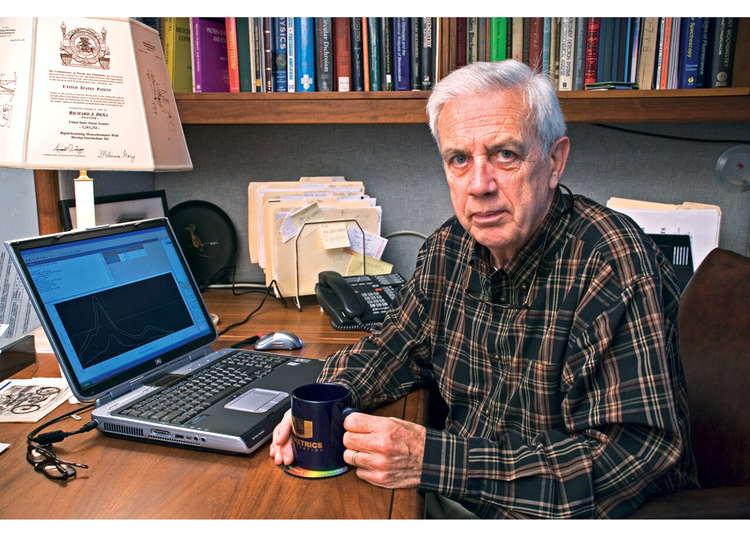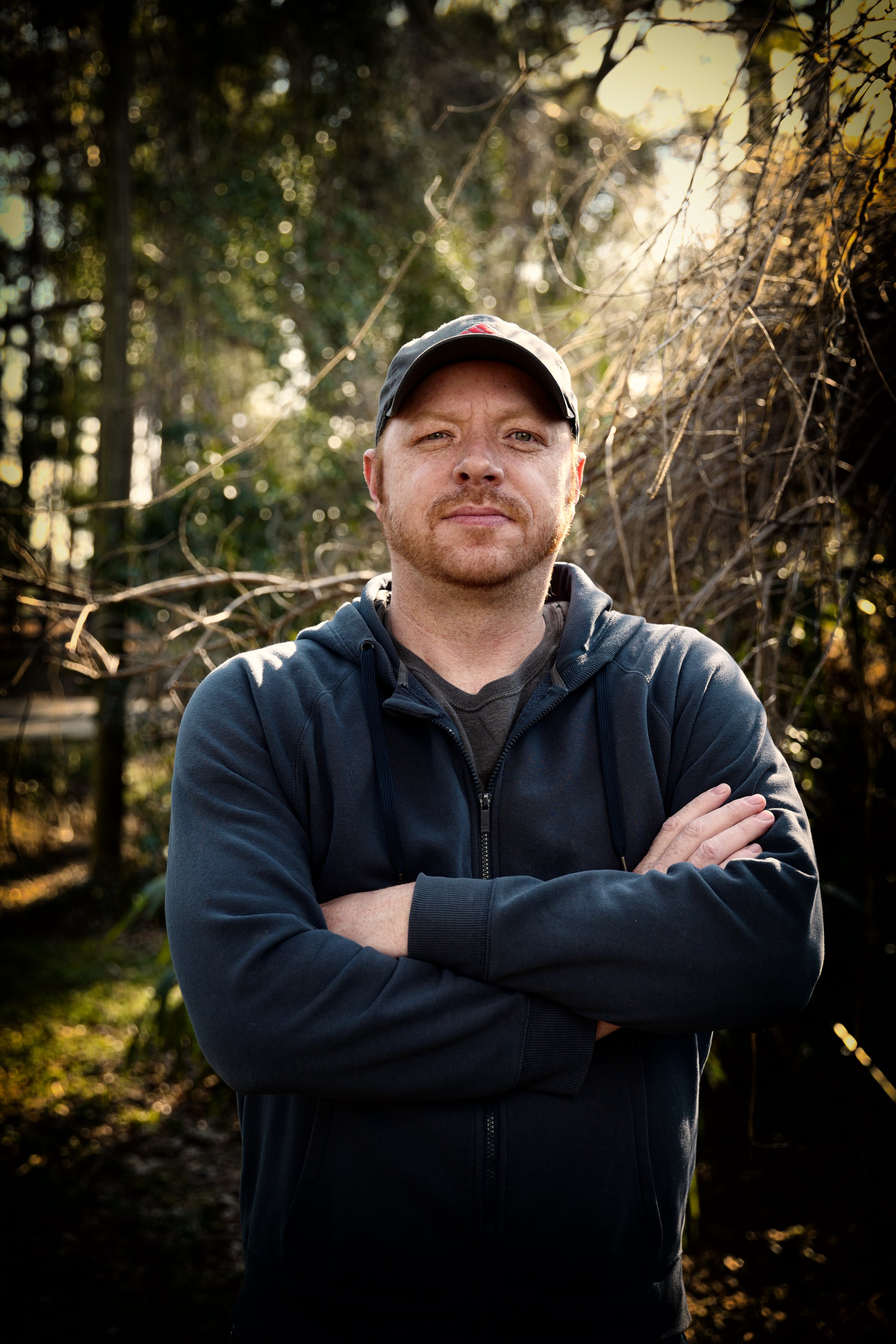Getting The Uv/vis To Work
Getting The Uv/vis To Work
Blog Article
The 15-Second Trick For Uv/vis/nir
Table of ContentsExcitement About SpectrophotometersAll about Uv/vis/nirThe 45-Second Trick For Circularly Polarized Luminescence9 Easy Facts About Circularly Polarized Luminescence ShownUv/vis/nir for BeginnersExamine This Report on SpectrophotometersSome Known Details About Spectrophotometers Uv/vis/nir Things To Know Before You Get ThisThe 7-Minute Rule for Circular DichroismSome Ideas on Uv/vis You Should KnowThe Definitive Guide to Circularly Polarized LuminescenceNot known Facts About Uv/visSome Of Uv/vis
It is then scanned through the sample and the recommendation options. Fractions of the incident wavelengths are sent through, or shown from, the sample and the reference. The resultant light strikes the photodetector device, which compares the relative intensity of the two beams. Electronic circuits transform the relative currents into linear transmission percentages and/or absorbance/concentration values.The transmission of a referral substance is set as a standard (information) value, so the transmission of all other substances are recorded relative to the preliminary "zeroed" substance. The spectrophotometer then converts the transmission ratio into 'absorbency', the concentration of particular components of the test sample relative to the initial substance.
Because samples in these applications are not readily offered in big quantities, they are particularly suited to being examined in this non-destructive method. In addition, precious sample can be saved by making use of a micro-volume platform where just 1u, L of sample is required for total analyses. A short explanation of the treatment of spectrophotometry includes comparing the absorbency of a blank sample that does not contain a colored substance to a sample that contains a colored substance.
Some Known Questions About Circular Dichroism.
In biochemical experiments, a chemical and/or physical residential or commercial property is chosen and the treatment that is used is specific to that home in order to derive more information about the sample, such as the quantity, purity, enzyme activity, and so on. Spectrophotometry can be utilized for a number of strategies such as figuring out ideal wavelength absorbance of samples, determining ideal p, H for absorbance of samples, determining concentrations of unknown samples, and determining the p, Ka of different samples.: 21119 Spectrophotometry is also a useful process for protein filtration and can also be used as a technique to create optical assays of a compound.
It is possible to understand the concentrations of a two element mix utilizing the absorption spectra of the standard options of each part. To do this, it is necessary to know the termination coefficient of this mixture at two wave lengths and the termination coefficients of options that include the recognized weights of the 2 components.

The Best Strategy To Use For Uv/vis
Area. The concentration of a protein can be approximated by measuring the OD at 280 nm due to the presence of tryptophan, tyrosine and phenylalanine.
Nucleic acid contamination can also interfere. This method requires a spectrophotometer capable of measuring in the UV region with quartz cuvettes.: 135 Ultraviolet-visible (UV-vis) spectroscopy involves energy levels that delight electronic transitions. Absorption of UV-vis light thrills molecules that are in ground-states to their excited-states. Noticeable area 400700 nm spectrophotometry is used extensively in colorimetry science.
These curves can be used to evaluate a brand-new batch of colorant to check if it makes a match to specs, e
Traditional visible standard noticeable can not detect if find colorant or the base material has product. This can make it difficult to manage color problems if for example one or more of the printing inks is fluorescent. There are two significant setups for visual spectrum spectrophotometers, d/8 (round) and 0/45.
Researchers utilize this instrument to determine the quantity of compounds in a sample. If the substance is more concentrated more light will be soaked up by the sample; within small varieties, the Beer, Lambert law holds and the absorbance between samples vary with concentration linearly. When it comes to printing measurements 2 alternative settings are commonly used- without/with uv filter to control better the result of uv brighteners within the paper stock.
Some Known Facts About Uv/vis/nir.
Some applications require little volume measurements which can be performed with micro-volume platforms. As explained in the applications area, spectrophotometry can be utilized in both qualitative and quantitative analysis of DNA, RNA, and proteins. Qualitative analysis can be used and spectrophotometers are utilized to tape spectra of substances by scanning broad wavelength areas to identify the absorbance properties (the intensity of the color) of the substance at each wavelength.

Getting My Circular Dichroism To Work
One significant aspect is the type of photosensors that are offered for various spectral regions, but infrared measurement is also difficult because practically everything emits IR as thermal radiation, particularly at wavelengths beyond about 5 m. Another issue is that several materials such as glass and plastic take in infrared, making it incompatible as an optical medium.
2013. p. 13. Allen, DW; Cooksey, C; Tsai, BK (Nov 13, 2009). "Spectrophotometry". Recovered Dec 23, 2018. Ninfa AJ, Ballou DP, Benore M (2010 ). Essential Lab Techniques for Biochemistry and Biotechnology (second ed.). Hoboken: Wiley & Sons. ISBN 9780470087664. OCLC 488246403. Schwedt G (1997 ). The necessary guide to analytical chemistry.
Oke, J. B.; Gunn, J. E.
Get This Report about Uv/vis

Ninfa AJ, Ballou DP, Benore M (2015 ). Essential Lab Approaches for Biochemistry and Biotechnology (3, rev. ed.). circular dichroism. Laboratory Equipment.
Indicators on Circularly Polarized Luminescence You Need To Know
Retrieved Jul 4, 2018. Trumbo, Toni A.; Schultz, Emeric; Borland, Michael G.; Pugh, Michael Eugene (April 27, 2013). "Applied Spectrophotometry: Analysis of a Biochemical Mixture". Biochemistry and Molecular Biology Education. 41 (4 ): 24250. doi:10. 1002/bmb. 20694. PMID 23625877. (PDF). www. mt.com. Mettler-Toledo AG, Analytical. 2016. Recovered Dec 23, 2018. Cortez, C.; Szepaniuk, A.; Gomes da Silva, L.
"Checking Out Proteins Purification Techniques Animations as Tools for the Biochemistry Teaching". Journal of Biochemistry Education. 8 (2 ): 12. doi:. Garrett RH, Grisham CM (2013 ). Biochemistry. Belmont, CA: Cengage. p. 106. ISBN 978-1133106296. OCLC 801650341. Holiday, Ensor Roslyn (May 27, 1936). "Spectrophotometry of proteins". Biochemical Journal. 30 (10 ): 17951803. doi:10. 1042/bj0301795.
PMID 16746224. Hermannsson, Ptur G.; Vannahme, Christoph; Smith, Cameron L. C.; Srensen, Kristian T.; Kristensen, Anders (2015 ). "Refractive index dispersion noticing utilizing a selection of photonic crystal resonant reflectors". Applied Physics Letters. 107 (6 ): 061101. Bibcode:2015 Ap, Ph, L. 107f1101H. doi:10. 1063/1. 4928548. S2CID 62897708. Mavrodineanu R, Schultz JI, Menis O, eds.
The 8-Minute Rule for Spectrophotometers
U.S. Department of Commerce National Bureau of Standards unique publication; 378. Washington, D.C.: U.S. National Bureau of Standards. p. 2. OCLC 920079.
The process starts with a controlled light that illuminates the analyzed sample. In the case of reflection, as this light connects with the sample, some is soaked up or given off. The given off light journeys to the detector, which is analyzed, measured, and site web presented as industry-standard color scales and indices.
All terms are evaluated over the noticeable spectrum from 400 to 700 nm. In the case of transmission, when the light engages with the sample, it is either absorbed, reflected, or sent.
Not known Incorrect Statements About Spectrophotometers
Examples consist of APHA (American Public Health Association) for watercolor and pureness analysis, ASTM D1500 for petrochemical color analysis, edible oil indices utilized in food, and color analyses of drinks. All terms are evaluated over the noticeable spectrum from 400 to 700 nm.
Image Credit: Matej Kastelic/ Dr. Arnold J. Beckman and his associates at the National Technologies Laboratories first developed the spectrophotometer in 1940. In 1935 Beckman established the company, and the discovery of the spectrophotometer was their most ground-breaking invention.
The Ultimate Guide To Uv/vis
99% accuracy. With time, researchers kept enhancing the spectrophotometer design to enhance its efficiency. For circumstances, the UV abilities of the model B spectrophotometer were improved by replacing the glass prism with a quartz prism. Eventually, the Design DU was developed, containing a hydrogen lamp and other enhancements. This instrument was used in industrial labs, clinics, and chemistry and biochemistry departments.
After 1984, double-beam variations of the device were developed. The addition of external software with the provision of onscreen display screens of the spectra can be found in the 1990s. Generally, a spectrophotometer is comprised of two instruments, namely, a spectrometer and a photometer. A basic spectrophotometer includes a light, a monochromator, a collimator for straight beam transmission, a cuvette to position a sample, and a photoelectric detector.
The 4-Minute Rule for Uv/vis/nir
There are various kinds of spectrophotometers in various shapes and sizes, each with its own purpose or functionality. A spectrophotometer identifies just how much light is shown by chemical elements. spectrophotometers. It measures the difference in light intensity based on the overall amount of light presented to a sample and the quantity of beam that goes through the sample service
Based on the instrument's style, the sample is positioned in between the spectrometer and the photometer. After the light is passed through the sample, the photometer determines its intensity and displays the reading. A spectrophotometer is used to identify the concentration of both colorless and colored solutes in a solution. This instrument is used to figure out the rate of a response.
Report this page